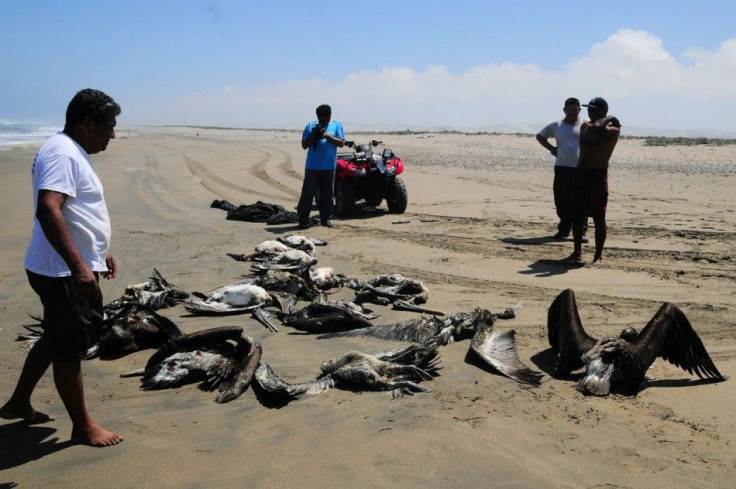Peru Pelican Deaths: How Did 600 Pelicans Die On The Beaches Of Northern Peru? [PHOTO]

Ornithologists in Peru are in investigating the death of an estimated 600 pelicans on the beaches of northern Peru, according to AFP.
Peru's Oceanic Institute (IMARPE) said that, as of Sunday, they had found 538 dead pelicans and 54 dead Peruvian Boobies. They also found the carcasses of five sea lions that washed ashore and the decomposed remains of a turtle.
The Ministry of Production, in charge of fisheries, said in a statement that early results suggest that the birds died on the beach, and did not wash ashore dead.
The investigation follows an incident that took place in April when 877 dolphins were found washed up dead on the same stretch of coast.
While it is not immediately clear if two incidents are connected, investigators are now looking in to a highly infectious virus known as morbillivirus as the reason for the deaths, Peruvian Deputy Environment Minister Gabriel Quijandria told CNN
Morbillivirus is a type of virus that causes serious disease in several species of animals and in people
An important feature of morbillviruses is their ability to cause major epidemics when populations without immunity are exposed.
There have reportedly been several major die-offs among marine mammals caused by morbilliviruses in recent years, according to the Dolphin Research Center
Baikal seals in Lake Baikal in 1987, harbor seals in northwestern Europe in 1988, and striped dolphins in the Mediterranean Sea in 1990 have all been affected by separate morbillivirus epidemics.
The National Oceanographic and Atmospheric Association recently implicated morbillivirus infection as the primary cause of the 1987-1988 U. S. Atlantic coast bottlenose dolphin die-offs. In each of these events, thousands of animals are believed to have died.
When you have something this large, my gut would tell me that there's something traumatic that happened, Sue Rocca, a marine biologist with the Whale and Dolphin Conservation Society, told CNN.
As the investigation in to morbillviruses continues, preliminary reports have ruled out that seismic sound waves created by oil exploration in that stretch of sea could have killed the birds, according to the environmental ministry.
© Copyright IBTimes 2024. All rights reserved.












